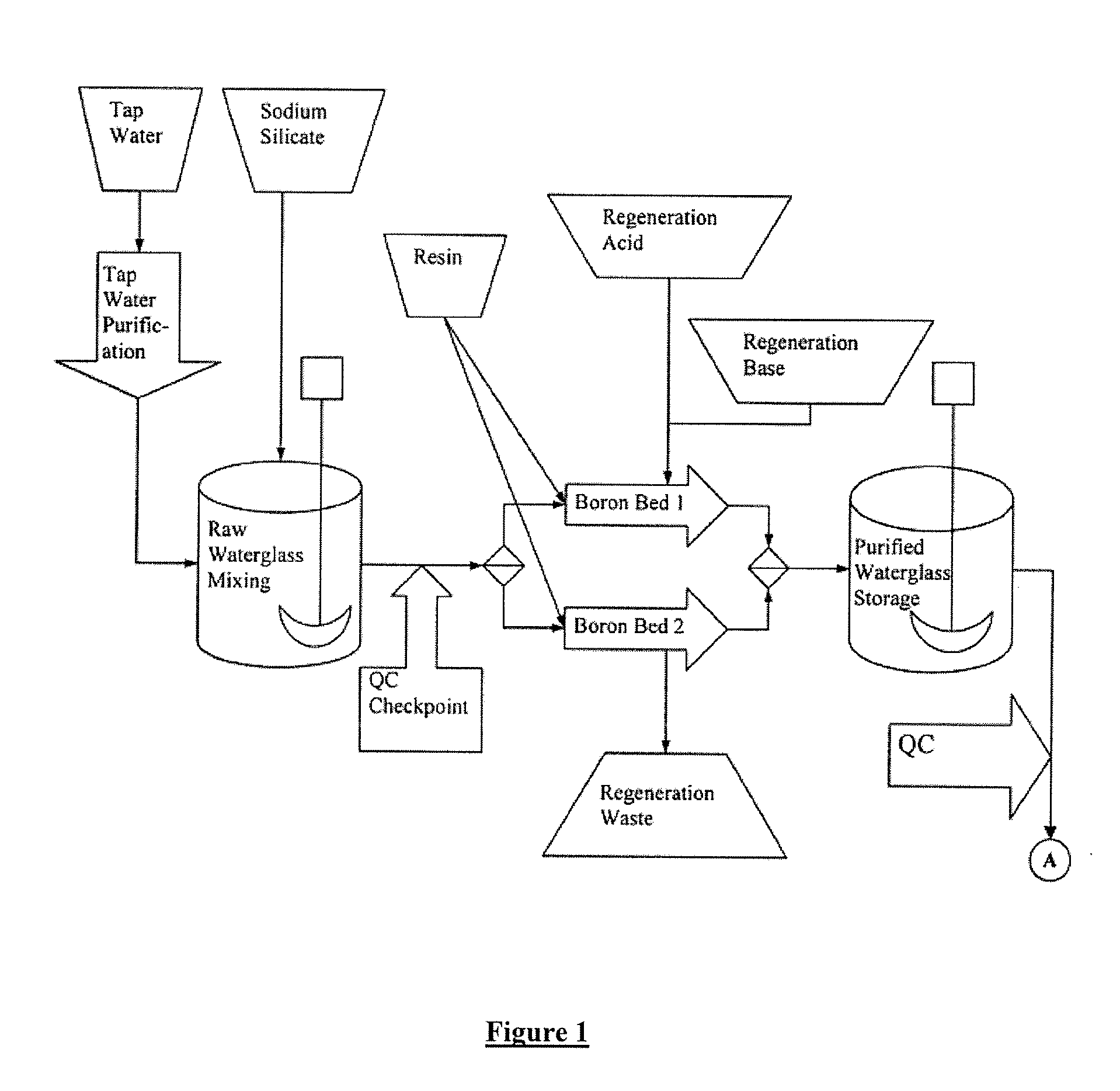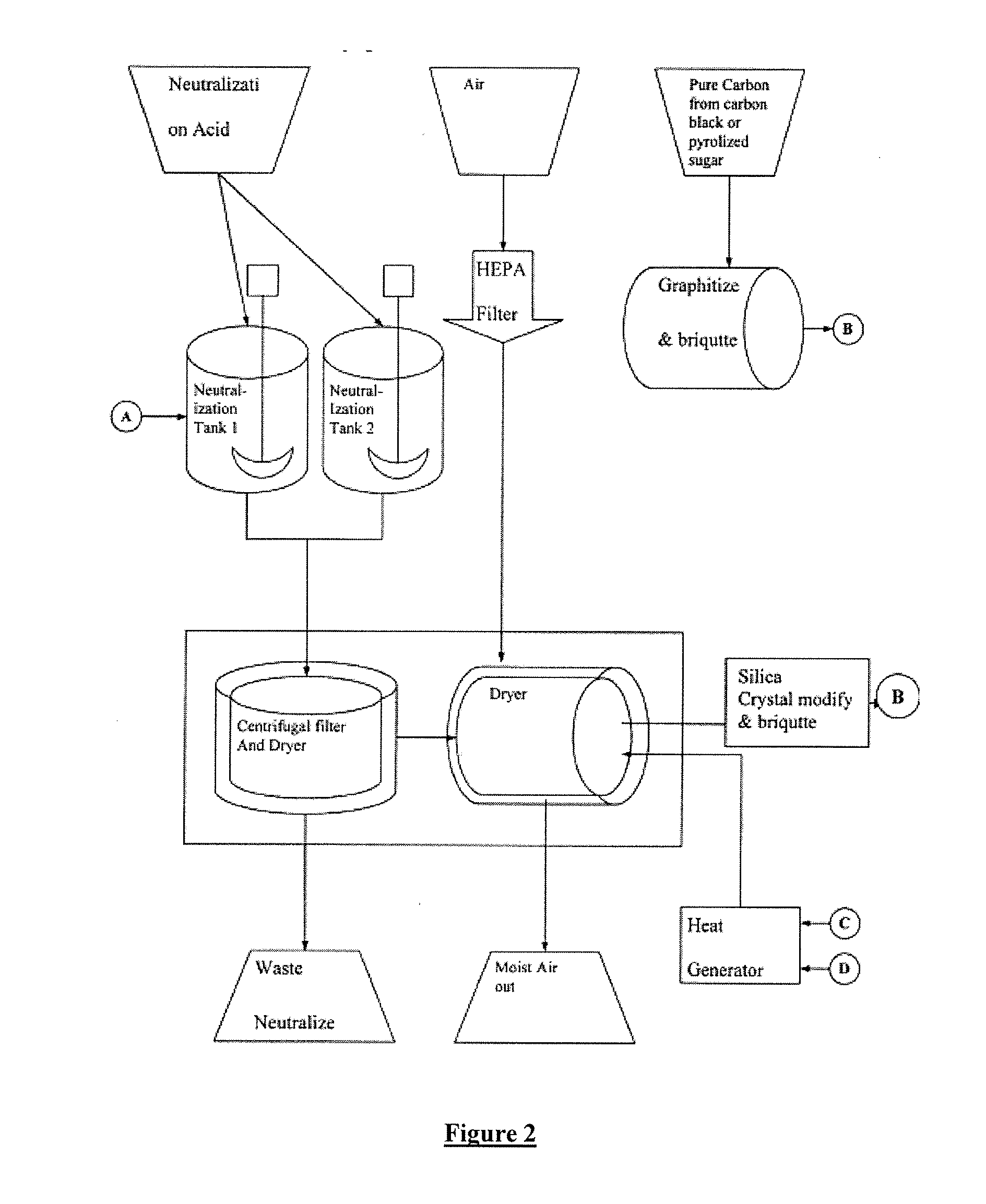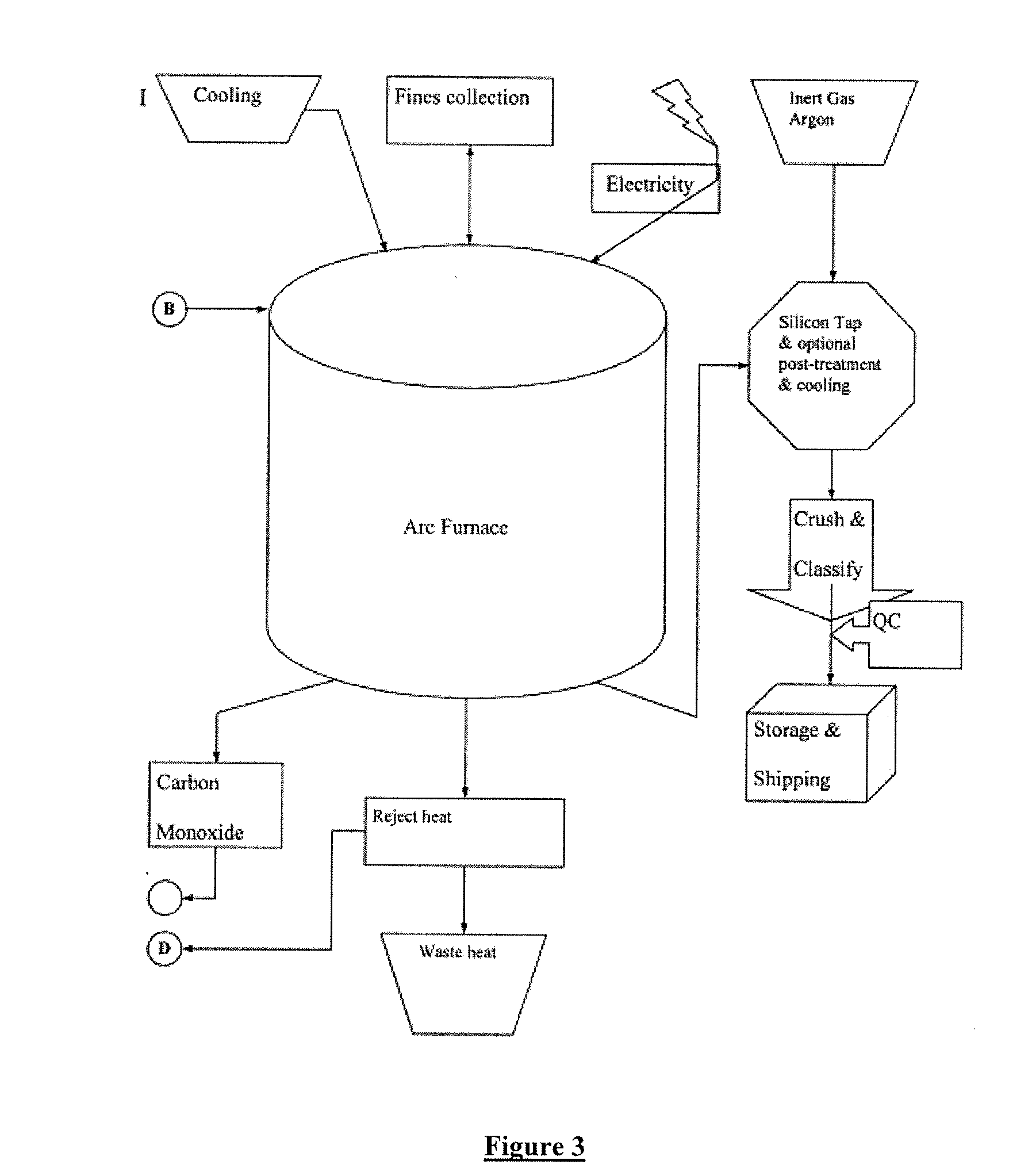Method for making silicon for solar cells and other applications
- Summary
- Abstract
- Description
- Claims
- Application Information
AI Technical Summary
Benefits of technology
Problems solved by technology
Method used
Image
Examples
example 1
[0047] 10.0 grams of sodium silicate was dissolved in 200 milliliters of de-ionized water. The pH of the solution was 11.2 The sample was analyzed for boron using both Inductively Coupled Plasma (ICP) as well as HACH wet boron determination methods using BoroTrace™ 3 reagent. The starting boron content was 4 parts per million by weight. The original solution was passed through a 50 milliliter resin column containing Rohm & Haas, Amberlite® IRA-743-A chelating resin. The resin uses moiety that specially attracts boron. Other companies make a similar suitable resin which may also be used in this application. The column does not absorb silicate or sodium ions. A 75 milliliter fraction was collected and analyzed for boron. The boron was reduced to 0.1 ppm.
example 2
[0048] 10.0 grams of sodium silicate was dissolved in 200 milliliters of de-ionized water. The pH of the solution was 11.2 The sample pH was adjusted to 10.0 with sulfuric acid. The sample was analyzed for boron using both Inductively Coupled Plasma (ICP) as well as HACH wet boron determination methods using BoroTrace™ 3 reagent. The starting boron content was 4 parts per million by weight. The original solution was passed through a 50 milliliter resin column containing Rohm & Haas, Amberlite® IRA-743-A chelating resin. The resin uses moiety that specially attracts boron. Other companies make a similar suitable resin which may also be used in this application. The column does not absorb silicate or sodium ions. A 75 milliliter fraction was collected and analyzed for boron. The boron was reduced to 0.09 ppm.
example 3
[0049] 10.0 grams of sodium silicate was dissolved in 200 milliliters of de-ionized water. The pH of the solution was 11.2 The sample pH was adjusted to 10.0 with sulfuric acid. The sample was analyzed for boron using both Inductively Coupled Plasma (ICP) as well as HACH wet boron determination methods using BoroTrace™ 3 reagent. The sample was intentionally spiked with 12.0 milligrams of boric acid. The starting boron content was 15 parts per million by weight. The original solution was passed through a 50 milliliter resin column containing Rohm & Haas, Amberlite® IRA-743-A chelating resin. The resin uses moiety that specially attracts boron. Other companies make a similar suitable resins that may also be used in this application. The column does not absorb silicate or sodium ions. A 75 milliliter fraction was collected and analyzed for boron. The boron was reduced to 0.1 ppm.
PUM
 Login to View More
Login to View More Abstract
Description
Claims
Application Information
 Login to View More
Login to View More - Generate Ideas
- Intellectual Property
- Life Sciences
- Materials
- Tech Scout
- Unparalleled Data Quality
- Higher Quality Content
- 60% Fewer Hallucinations
Browse by: Latest US Patents, China's latest patents, Technical Efficacy Thesaurus, Application Domain, Technology Topic, Popular Technical Reports.
© 2025 PatSnap. All rights reserved.Legal|Privacy policy|Modern Slavery Act Transparency Statement|Sitemap|About US| Contact US: help@patsnap.com



